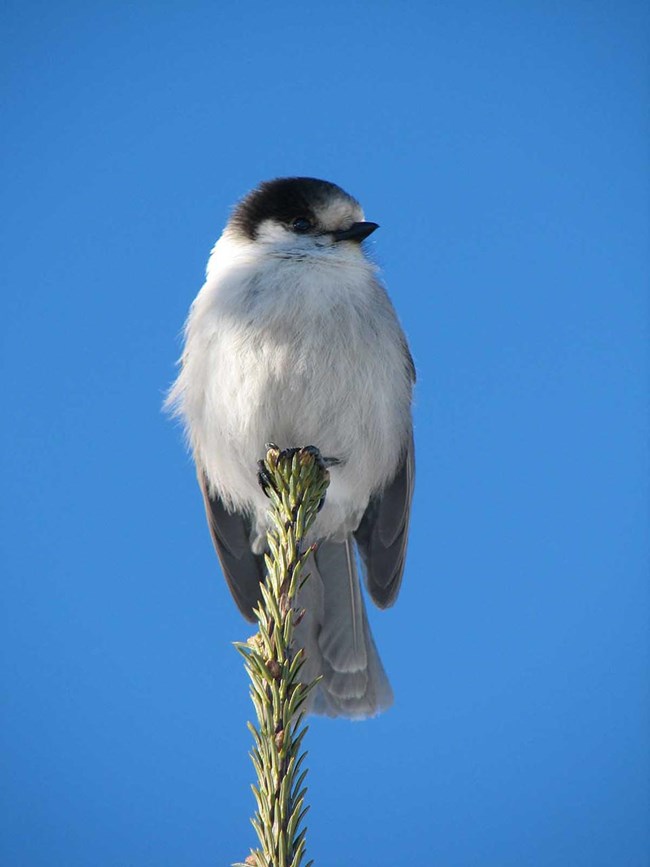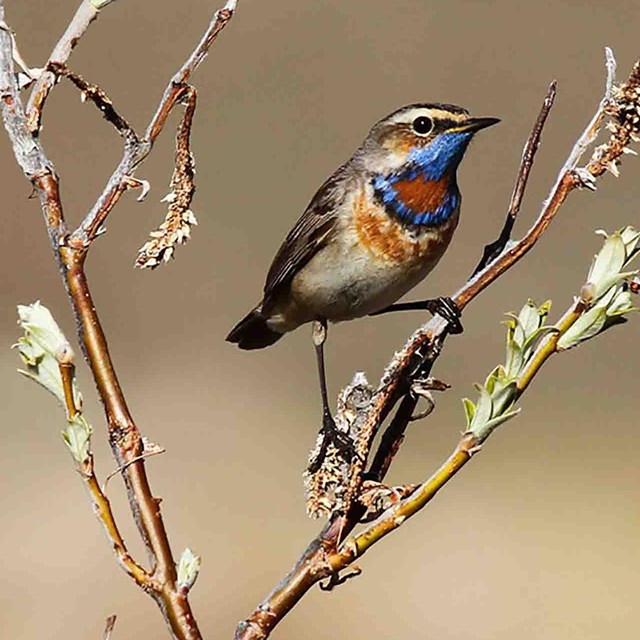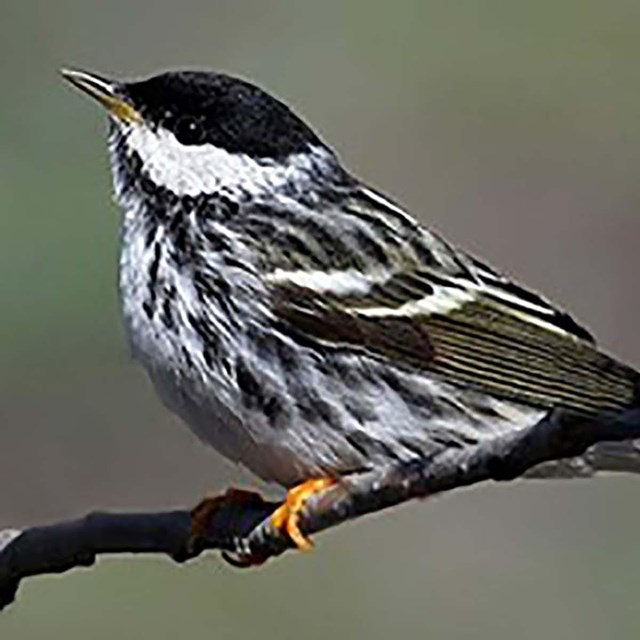
NPS/Keven Bacher
Scientists at Denali National Park and Preserve have a number of research projects going on that look at songbirds. Critical Connections is a project that is expanding our knowledge of migratory birds. Another study is looking at how climate change is impacting Canada jays that rely on stored food, specifically what happens if their food caches spoil. The National Park Service also monitors songbirds to track the changes in the species composition or populations over time.
Some of the common somgbirds seen around Kenai Fjords National Park include the Black-billed magpie and Steller's jay. Have you done any birdwatching in the parks to see what you can see?
Songbirds in Arctic and Subarctic Alaska
Worldwide, bird populations have been in decline due to a number of factors. Because birds are sensitive to environmental changes and respond relatively quickly, they are good indicators to detect and understand change. The National Park Service Arctic and Central Alaska inventory and monitoring networks monitor passerines (songbirds), as well as vegetation, climate, and other factors over time. Together, this information has helped us understand changes in high-latitude ecosystems and how birds are responding to them.
-
 Monitoring Arctic Landbirds
Monitoring Arctic LandbirdsSongbirds comprise more than 50% of the bird species in Arctic parklands.
-
 Monitoring Passerines in Central Alaska
Monitoring Passerines in Central AlaskaChanges in passerine communities could provide new and important insights into how climate change is affecting Central Alaska ecosystems.
Last updated: April 30, 2025
